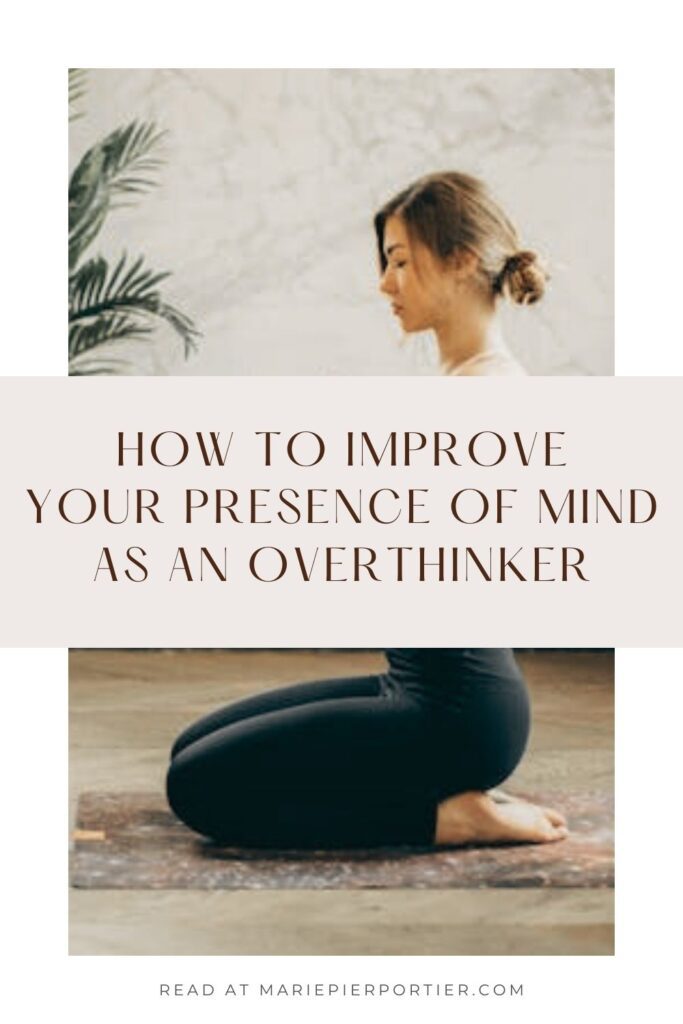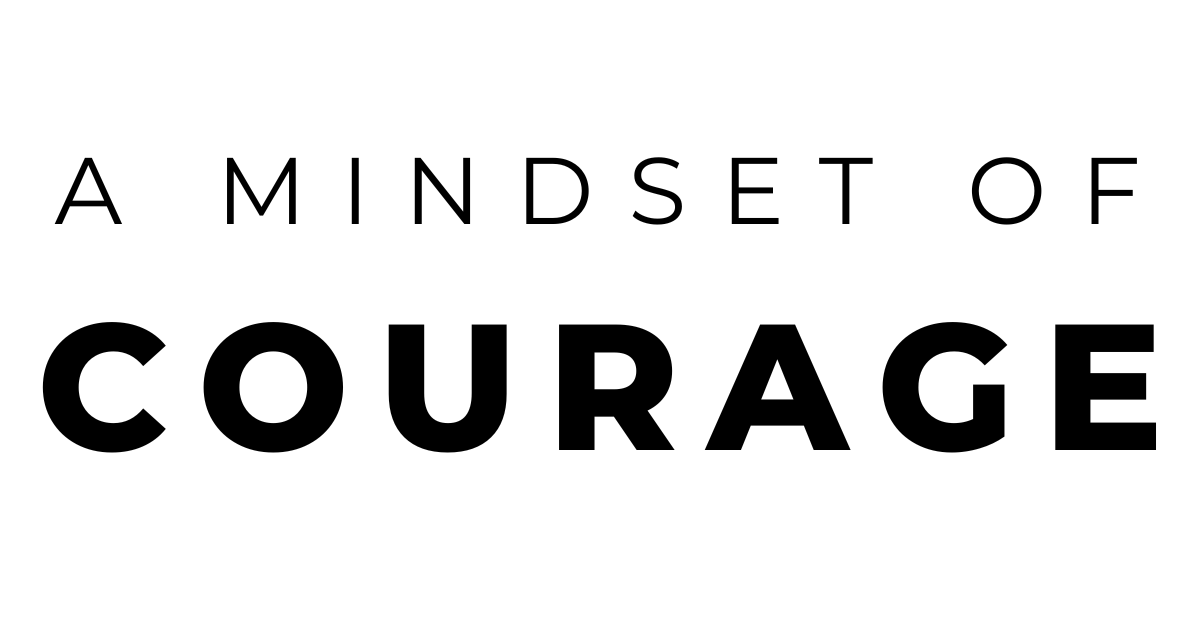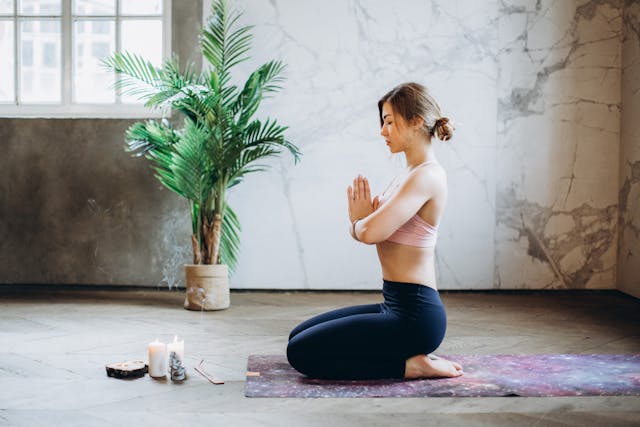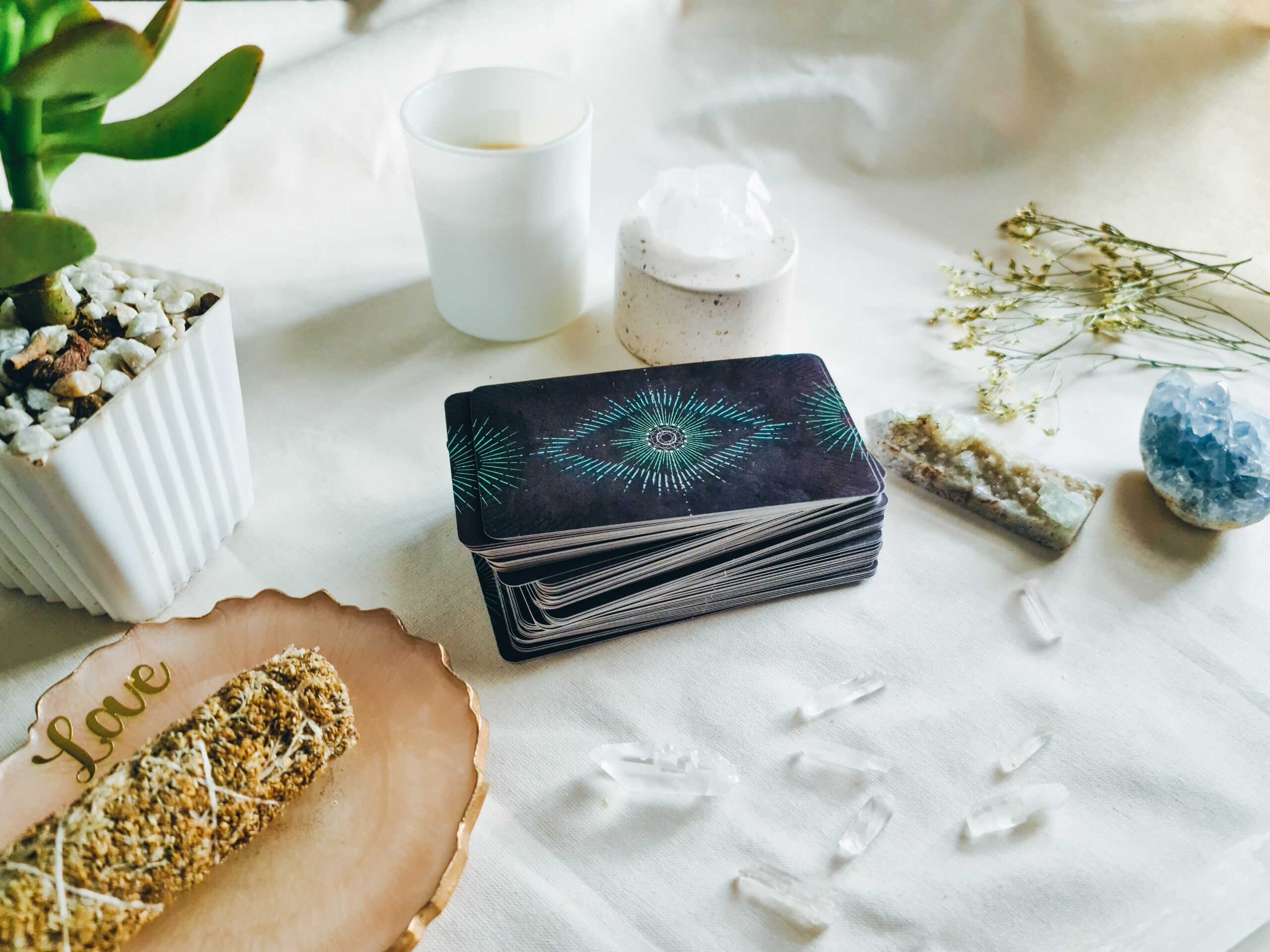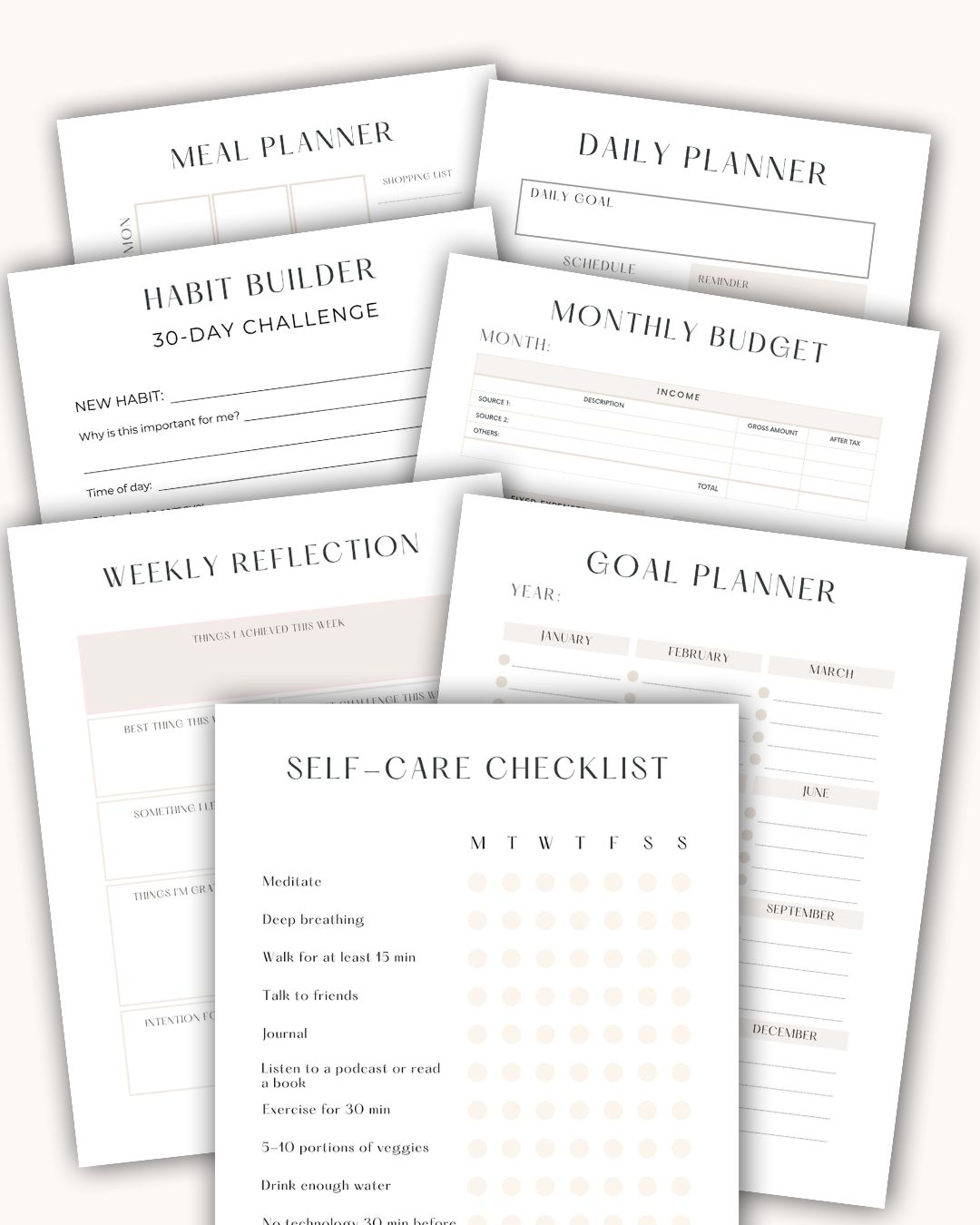If you’re an anxious/overthinker like I am, chances are you live a lot in your head, and that you don’t always enjoy the present moment. In this blog post, I’ll give you some tips I find super helpful to improve my presence of mind, especially when I’ve got my brain spinning around.
This post contains affiliate links (which doesn’t make any difference for you). Read full disclosure here.
Save this post to read later
Click the image to save this post on Pinterest
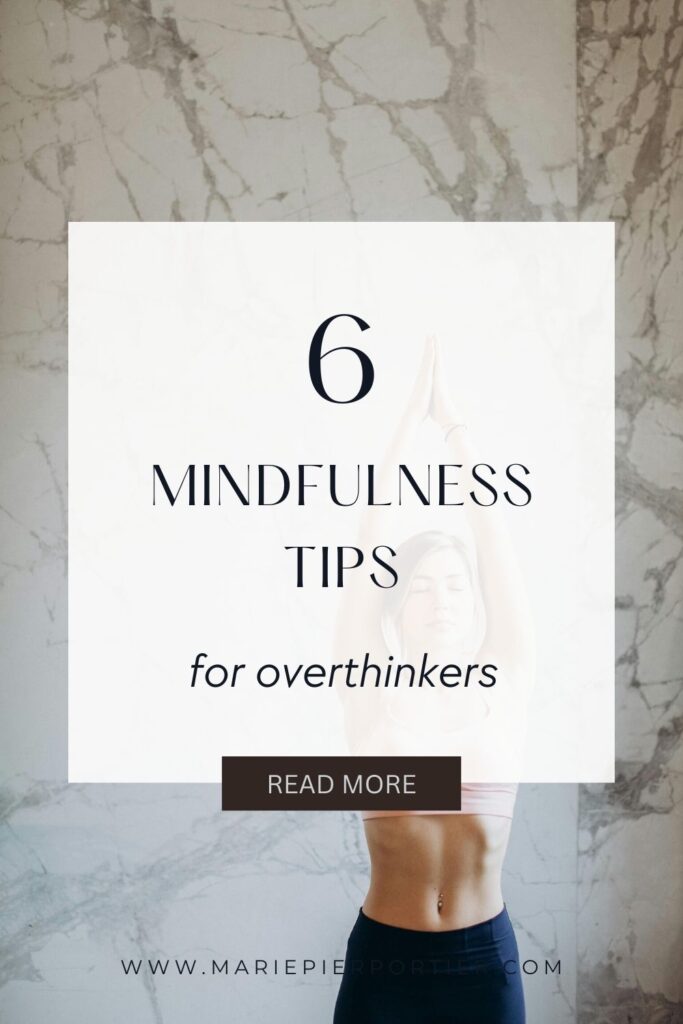
How to Improve Your Presence of Mind As An Overthinker
1. What is mindfulness?
Mindfulness is the basic human ability to be fully present, aware of where we are and what we’re doing, and not overly reactive or overwhelmed by what’s going on around us.
Mindfulness also refers to the presence of mind.
So let’s give some examples to show what it looks like to be mindful, and what it does NOT to be mindful.
Here’s a real life situation example.
Let’s say you’re washing the dishes.
When you’re mindful, you’ll notice the temperature of the water, the color, smell and maybe brand of the soap. You’ll observe what you’re doing. You might have thoughts. But when you’re mindful, these thoughts are about washing the dishes. For example, it could sound like “Hmmm I like the smell of this soap”, or “this kitchen is so bright”. You are living in the present moment.
When you’re not mindful, you’ll think about what you’re going to do later, or maybe think about something that happened earlier and wonder if you had the proper reaction, of maybe you’ll wonder if you should’ve said this or that, or make a mental to-do list for tomorrow. Next thing you know, all the dishes are done, you’re on to the next thing and you couldn’t even tell me what color was the soap.
2. Examples of a good presence of mind
Being mindful means to be in the present moment mentally.
Here are some examples of being in the present moment;
-
- Observe the action you’re undertaking. For example, if you,’e washing the dishes, you’ll notice the color of the soap, the texture of the dishes, the smell, the temperature of the water and more or less little details about the kitchen depending on your predisposition to notice little things in general.
- Listen when someone is speaking to you; look at them in the eyes, hear and understand what they’re saying, without thinking of what you’re going to say next
- Notice when something, or someone, is triggering you; for example, when someone says something hurtful to you, the more mindful you are, the more control you’ll have over your reaction. You make the difference between feelings and reactions.
- Feeling in your body when you’re not full before your stomach hurts or feels bloated;
- Focusing on feeling the sun or wind on your face;
- Listen to and notice all the sounds around you.
Being mindful means focusing your attention on anything one of your 5 senses capture.
Like right, now, while you’re reading this. Where are you? What’s the temperature like? What can you hear around you? What do you see around? Are you hungry? Are you comfortable? Any part of your body hurts?
3. Examples of an absence of the mind
Have you ever heard the expression: “being in your head”? Here are some examples or signs that it happens to you:
- Eating fast without tasting all the savours in your mouth;
- Walking fast, looking at your feet so you get from point A to point B, without observing your environment
- Thinking over and over again about a past situation, ruminating on how you should’ve done or said something that you can’t do anything about now;
- Multitasking without finishing what you’ve started;
- Constantly thinking about what’s next;
- Worrying about something you did or said that cannot be changed;
- Daydreaming to the point of losing track of time.
6 mindfulness tips to improve the presence of mind
What’s the difference between mindfulness and meditation?
When you’re used to being in your head a lot, “being mindful” might not mean a thing.
The hardest part of practising mindfulness when you’re a beginner is to actually understand what it feels like in the body.
That’s why it’s hard for some to make the difference between mindfulness and meditation.
You don’t have to meditate to practice mindfulness. But you have to be mindful to practise meditation.
Here are some things you can start doing to improve the presence of mind on a daily basis:
- When you walk outside, stop for a minute. Look up. Observe the nature around you and note some details about it, what color are the leaves, for examples.
- When you go back to a place you’re used to, your workplace or house, for example, try and find some details about the place that you had never noticed before.
- Whenever you’re waiting in line, do some people watching. For example, you can pay attention to how the employee interacts with the customer that’s right before you (but please don’t be creepy).
- When you sit in your car, pay attention to the sound of your motor turning on. How long does it last? Is it loud or pretty smooth? Try and reproduce it with your mouth (yeah, for real).
- When you type on your keyboard, notice what fingers you use, how fast you type, your posture, how your feet touch the floor (if they do?), and how often you look at your screen vs keyboard.
- When you cook, pay attention to how the blade cuts through the vegetable, how long it takes for the stove element to turn red, how fast the steam of the boiling water travels up in the air.
I know these examples might sound stupid. But they’ll force you to stop and really pay attention to what you’re doing in the right now, helping you to improve the presence of mind.
Related posts:
8 Mindfulness Tips to Slow Down During the Christmas Holidays
Save this post on Pinterest
